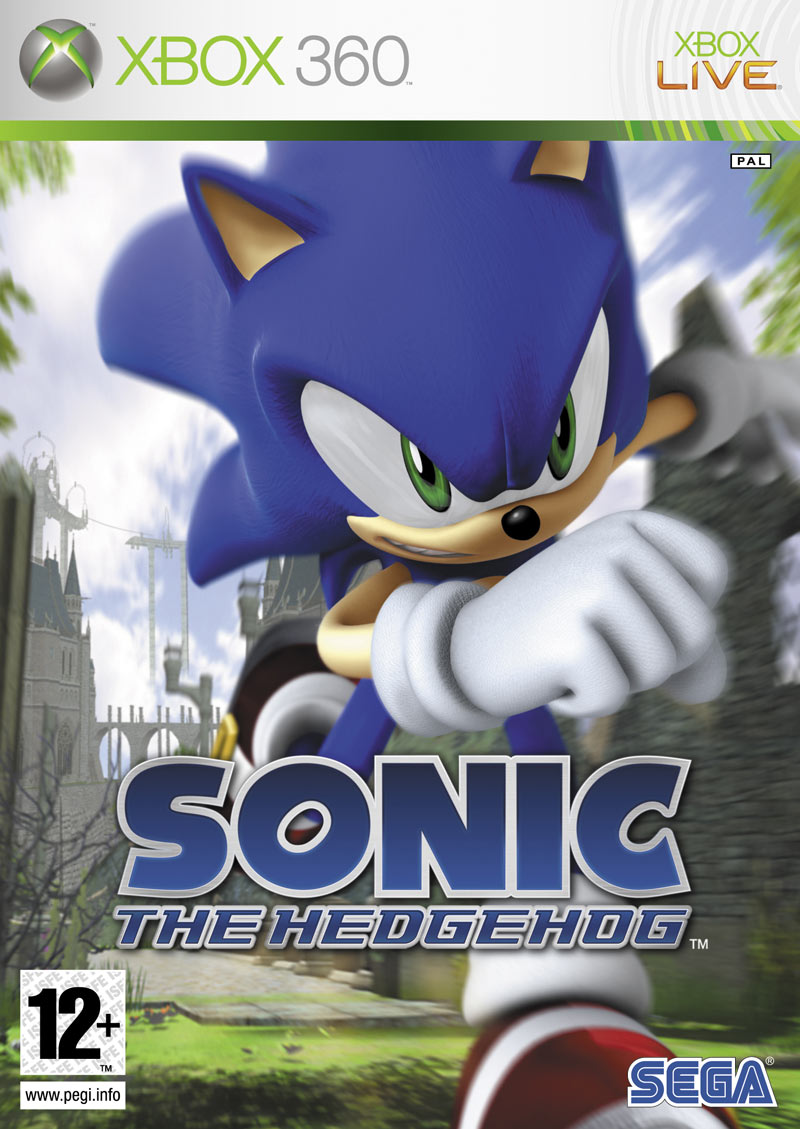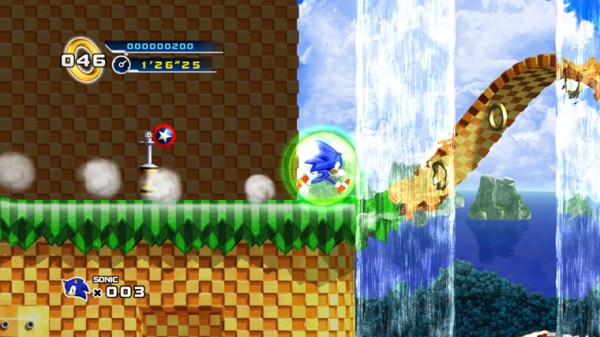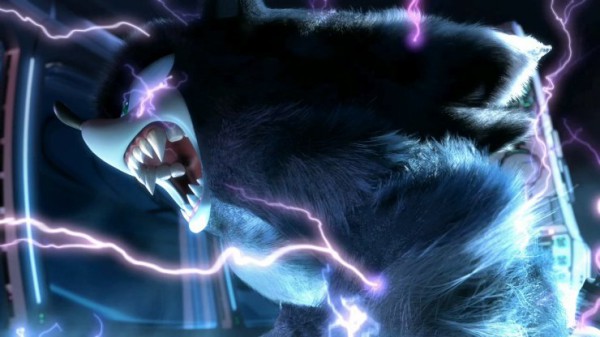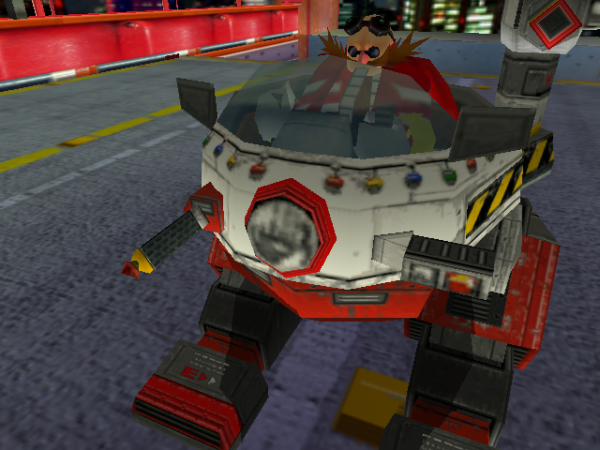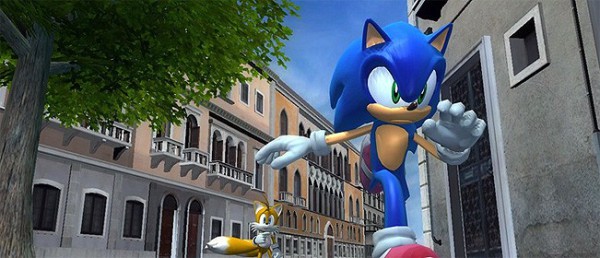The following is a guest article from SEGAbits writer Ben Burnham, who joined the website several years ago. He is an avid and long-time Sonic fan who’s written about the games numerous times over the years. As part of our intersite #Sonic23on23 celebration, Ben has written an article for us about what he thinks makes a bad Sonic game well…bad! Hope you enjoy.
If there’s one series known as much for its failures as for its successes, it’s Sonic the Hedgehog.
There was a time when SEGA’s famed mascot, spinoffs aside, seemed like he could do no wrong; The series was incredibly popular, and arguably a major reason the Genesis was able to put up such a strong fight against the Super Nintendo.
It then came time for Sonic to make the dreaded transition to 3D, and though critics and fans have become more jaded about the quality of the games in hindsight, the fact remains that Sonic Adventure and its sequel were given rave reviews and greeted with much fanfare when they were released on the Dreamcast.
From there, however, it would become a bumpy ride. Sonic Heroes and Sonic the Hedgehog 4 divided the fanbase, while Shadow the Hedgehog, Sonic the Hedgehog 2006, and Sonic and the Black Knight were panned across the board. Sonic and the Secret Rings and Sonic Unleashed were met with only tepid enthusiasm, and even with the well-received Sonic Colors and Sonic Generations thrown into the mix, it remains evident that the franchise has struggled to find its ground in recent years.
It makes sense then to answer, or at least attempt to answer, the big question of what makes a bad Sonic game bad, and how Sega can work to prevent future entries in the series from becoming bad. It seems like an easy question, but upon sitting down to write this article, it became clear to me just how difficult it is to answer.
The Sonic Adventure games on the surface featured much of what fans would grow to hate about the series; multiple playable characters, a large variety of differing gameplay styles, linear levels with few paths, and cheesy presentation. With all that said, these factors didn’t seem to bother much of anyone back in 1999 and 2001.
Upon giving it some thought, I’ve come to the conclusion that what made it work in those days was that the ideas back then were seen as being executed well. Most 3D platformers of that era didn’t feature multiple playable characters; and I don’t think many, if any at all, let you play as the villains in addition to the heroes. The freshness of these concepts certainly gave them strength, and while people universally preferred the Sonic gameplay to that of the other characters, the fanbase by and large didn’t question the existence of the other characters’ gameplay, seeming to accept them as a necessary part of those games. But it wasn’t just the fact that it was a new concept that made it a success. More importantly, the Sonic Adventure series was able to justify the other characters by getting their gameplay right and by giving them a role in the game that felt genuine and not like a marketing ploy.
Though fairly simplistic, the shooting mechanics of characters like Gamma and Dr. Eggman were solid, doing their job and working the way they were supposed to. Many dreaded the Knuckles and Rouge stages in the Adventure series, but they provided a challenge and did what they were supposed to do. With the exception of Big the Cat, most of the gameplay in the Sonic Adventure games, if nothing else, proved itself worthy of being a part of the overall experience, and it fit organically into what those games were and what they set out to be.
My big issue with where Sonic’s gone these days isn’t that they continue to add gameplay variety, but that the different gameplay they come up isn’t fun or well thought out. Amy Rose’s levels and her storyline in Sonic Adventure were short and didn’t overstay their welcome, while the Werehog in Sonic Unleashed had levels that felt like they went on for ages. Sonic Team back then knew where to devote the majority of their gameplay, while the Sonic Team of today releases games that are more Werehog than Hedgehog. The old Sonic Team knew how design gameplay centered on each characters’ unique strengths, while the new Sonic Team will add a parkour mechanic to a game and do almost nothing with it.
If there’s one thing that I’d like more than anything to get across to those who make the Sonic games, it’s that the poor implementation of the ideas is the problem, not the ideas themselves. Nobody would have complained about using the sword in Sonic and the Black Knight if the swordplay was fun and didn’t detract from the experience. Developer Big Red Button didn’t pull punches when they revealed up front that Sonic Boom would be far heavier on the exploration elements than recent Sonic titles, and I personally believe that many in the fanbase were optimistic about this, or at least hopeful, that we would have a fun new take on the franchise. It’s a series that’s flexible enough to warrant change, and to regularly shake things up, and these things are what keep things fresh.
It’s in this sense that Sega shouldn’t be afraid of new ideas. New ideas are what keep long-running series’ going, and without them, they eventually cease to exist. What makes a bad Sonic game bad isn’t that it features a new take on the character, or a new style of gameplay, but that the gameplay isn’t well-developed or fun. It’s not enough to just give Sonic a sword and call it a day, but the gameplay has to be paced well, using the sword has to be fun, and the new gimmick needs to justify its existence rather than simply feeling like a way to sell Happy Meals. A Sonic game that feels more like an exercise in marketing than a well-made product is a bad Sonic game. A Sonic game that’s released unfinished, where it’s evident that monetary return was more important to its publisher than putting out a quality game, is a bad Sonic game.
These are aspects that should apply to any game, but the Sonic franchise has fallen into these traps repeatedly. The worst Sonic games either banked too much on ideas that didn’t work or weren’t fun, or they attempted to do far too much with too little development time. There’s a level of quality that’s just expected from an IP of Sonic’s stature. Developers who are content enough to add guns to a Sonic spinoff, but not to make the effort to ensure that they work properly and that gamers would be happy to use them, are not doing justice to the series. Ideas that just seem to come across (at best) as “okay” in practice shouldn’t be included in a game, even if they’re for secondary characters, or if they’re in addition to strong speed sections. The ideas should never be making it past the planning stages because they aren’t worthwhile additions to the gameplay.
Looking towards the upcoming Sonic Boom, my fear is that it will be a bad Sonic game. I hope I’m wrong; I was so excited when it was first announced, believing that it would be a promising new start for the iconic mascot. If a combat system, which currently looks to (but hopefully does not) take up a majority of the game, is being viewed by the majority as something that isn’t fun, then it’s something that the developers need to make note of and fix. It’s something that they should have caught before the game was even shown, because what makes a good Sonic game good, just like with what makes any game good, is that it’s fun to play.
Through it all, that’s the most important thing. The conclusion after all this is so simple, but it’s one that has in the past so easily eluded Sega’s grasp; the game has to be fun to play. No matter what longtime fans may think of putting a villainous hedgehog on a motorcycle and sending him into battle, if the gameplay was fun to play, people would have eventually grown to accept it. Fun speaks volumes, and ultimately is the most important part of all forms of entertainment.
If any aspect of the experience, especially a major aspect, proves not to be fun, or proves not to justify itself in the context of the game it’s in, then that’s when we have a problem; because, in my view, that’s when we have a bad Sonic game.

